Insight Into the Making of a Gorilla Doctors Documentary
By Gorilla Doctors Staff on Monday, March 10th, 2014 in Blog.By Bryn Hughes, 52 Media, Inc.
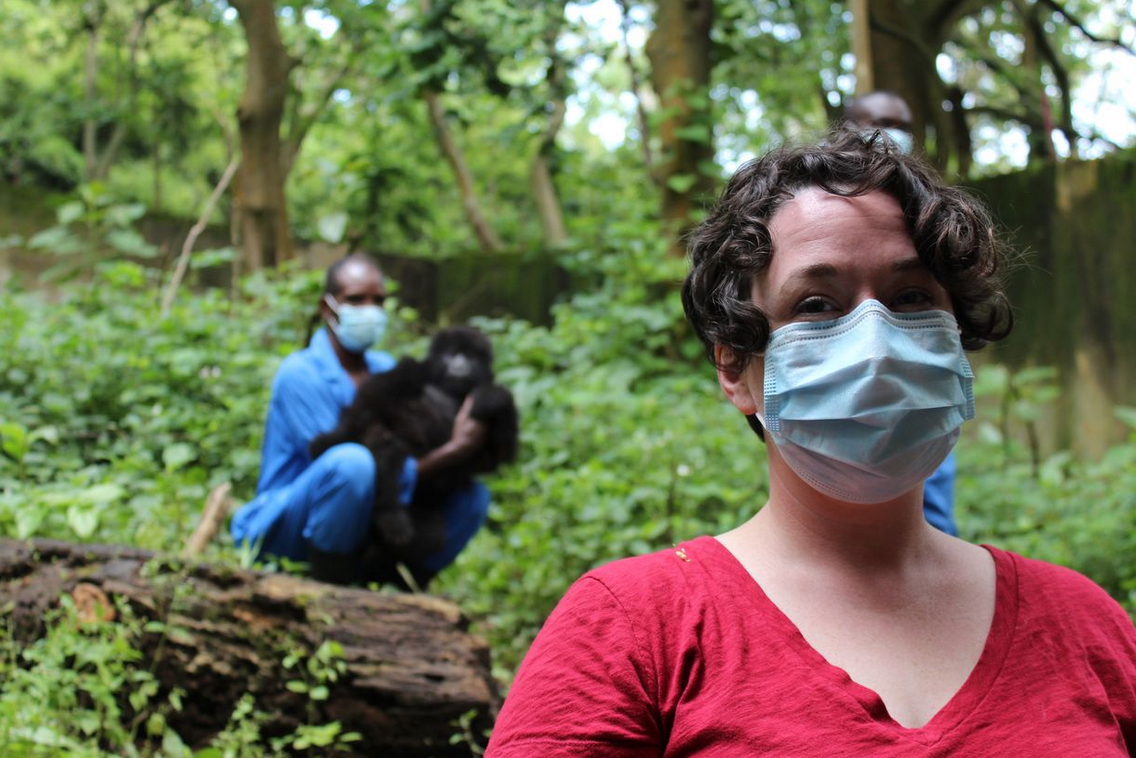 Bryn Hughes at the Senkwekwe Center in Rumangabo, DRC.
Bryn Hughes at the Senkwekwe Center in Rumangabo, DRC.
“When we got the go ahead to begin production on our documentary for the CBC’s The Nature Of Things about extreme conservation and the work of the Gorilla Doctors, there was a different kind of excitement amongst our crew. We all knew this was going to be one of those ‘once in a lifetime’ experiences. Though our crew has filmed all over the world, none of us had ever filmed wild mountain gorillas in their natural habitat.
Our preparations were swift and thorough, thanks to the help of Dr. Mike Cranfield and the Gorilla Doctors Communications Officer Jess Burbridge. Filming in places like Rwanda and DRC requires a little bit of extra attention. There aren’t very many places to replace a broadcast quality High Definition camera. With visas and filming permits in place (mostly!) we hop across the planet and find ourselves in Rwanda.
The fun (and frustration) of filming documentaries, especially in places like eastern Africa, is that things change quickly. We have to adapt our schedule and direction depending on what is happening, and we never truly know until we hit the ground. Our intrepid producer and advance party, David York, met our arrival with the news that the rebel group M23 had surrendered their arms, the Democratic Republic of Congo had opened up, and the Gorilla Doctors were heading up into Virunga Park imminently to check on the well being of the various wild habituated gorilla groups, who had been ranging in rebel-held territory for quite some time.
Filming gorillas has its variety of challenges. First, you have to physically get yourself and all of the requisite camera and sound gear up a volcano. Fortunately, there is a whole sub-industry of support surrounding this endeavor. Hardy four wheel drive trucks, porters, trackers and rangers all work to get you where you need to be. We had a few fairly easy hikes and some very challenging ones. The anticipation of seeing the gorillas and the incredible scenery keep you moving.
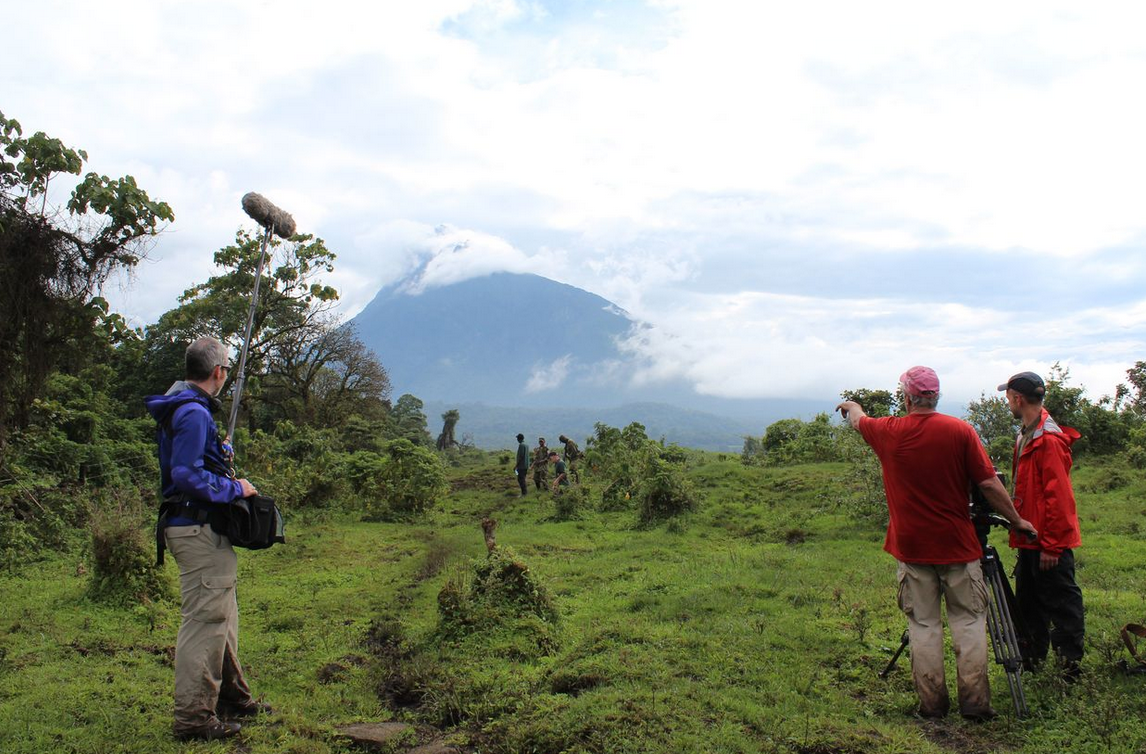 Filming around the volcanos in the Virunga Massif.
Filming around the volcanos in the Virunga Massif.
When we arrived at our ‘staging’ area (usually 200 meters or so from where the gorillas are hanging out) we prep our cameras and our sound gear, leave our non-essentials with the porters and make our way through the forest, which also can be prohibitive. It is usually dense and very wet. Like all gorilla visitors, we are limited to one hour, so we have to make the most of it. Our director of photography Michael Boland has the hardest job here. He must lug our camera through the thick vegetation and underbrush, get the shots that we need, follow gorillas and battle moisture. Thankfully, our gorilla pals sensed the spotlight and shone for the camera. And thankfully, Mike’s an excellent cameraman.
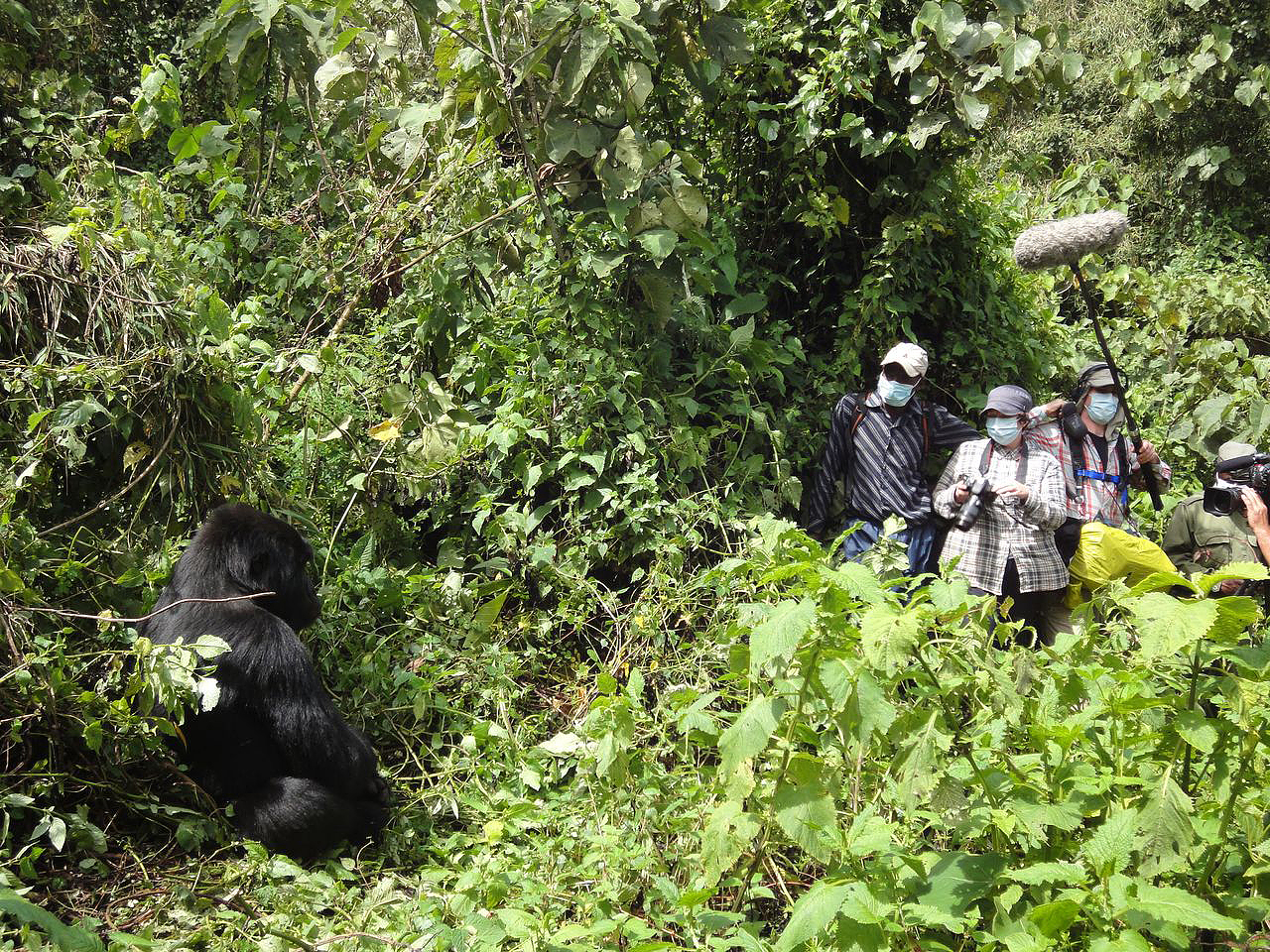 Filming the mountain gorillas of the Virunga Massif.
Filming the mountain gorillas of the Virunga Massif.
We captured Humba group’s massive dominant silverback climb a pair of bamboo stalks, then use his weight to break them in a stupendous crash, just to get to the top vegetation. We filmed a beautiful blackback from Rugendo group plop himself down in front of the camera and curiously stare at us for what seemed like ages. We documented mothers caring for their babes, juveniles frolicking and showing off, and a massive silverback grooming and napping with an infant. We experienced all sorts of lovely, surprising and spectacular moments in the forests of Rwanda and DRC.
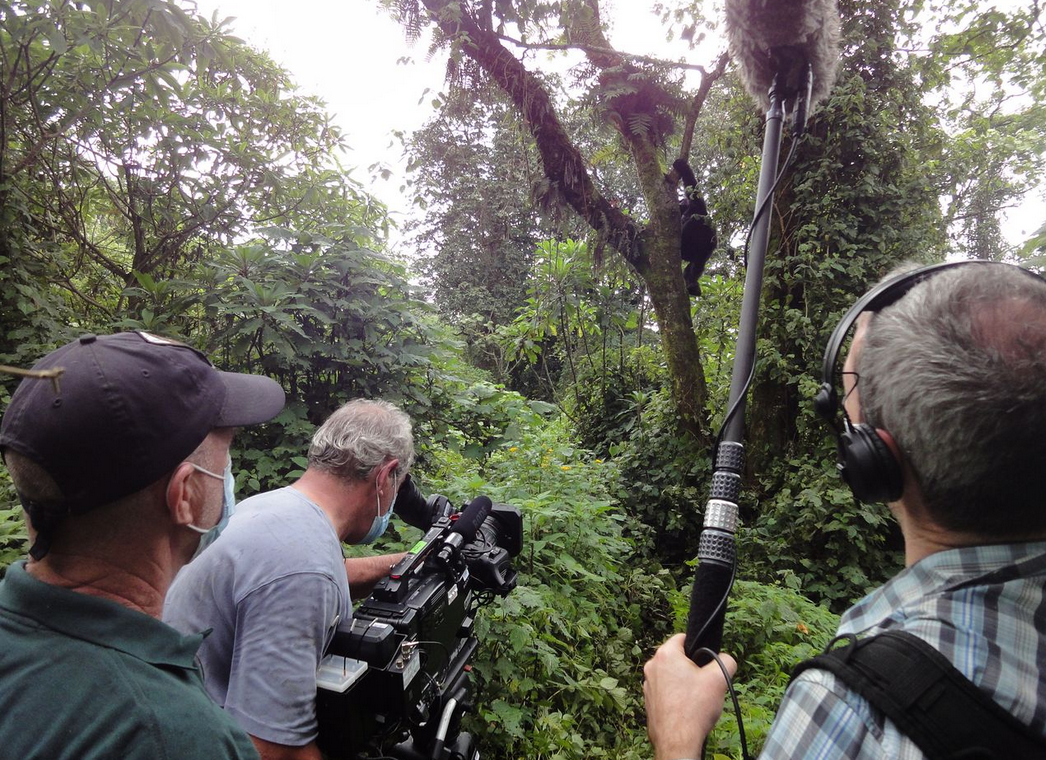 Filming the DRC mountain gorilla groups in Virunga National Park with Dr. Mike.
Filming the DRC mountain gorilla groups in Virunga National Park with Dr. Mike.
For me, I had my most memorable moment in Rwanda. It was our final trek as a full crew. We were following Sabyinyo group as they moved through the bamboo forest. A ranger and myself split from the crew to scout a little ahead of where the rest were filming. We came upon a small clearing and there sat an adult female and her baby. We had been trying to film her the entire time, but she kept moving away. There she sat, in perfect light, her arms encircling her baby. Not unlike how I hold my daughter. She just looked at me. Unperturbed. I snapped a few shots with my camera, but lowered it rather quickly. We just stood there looking at each other for a few minutes. It is easy to get wrapped up in getting the perfect shot, as this is what we were here to do. I let the awe and wonder of being in the presence of a majestic species in their natural world sink in, an experience that is getting harder and harder to have in this complicated world of ours. She then got up, babe secured beneath her, and ambled off.
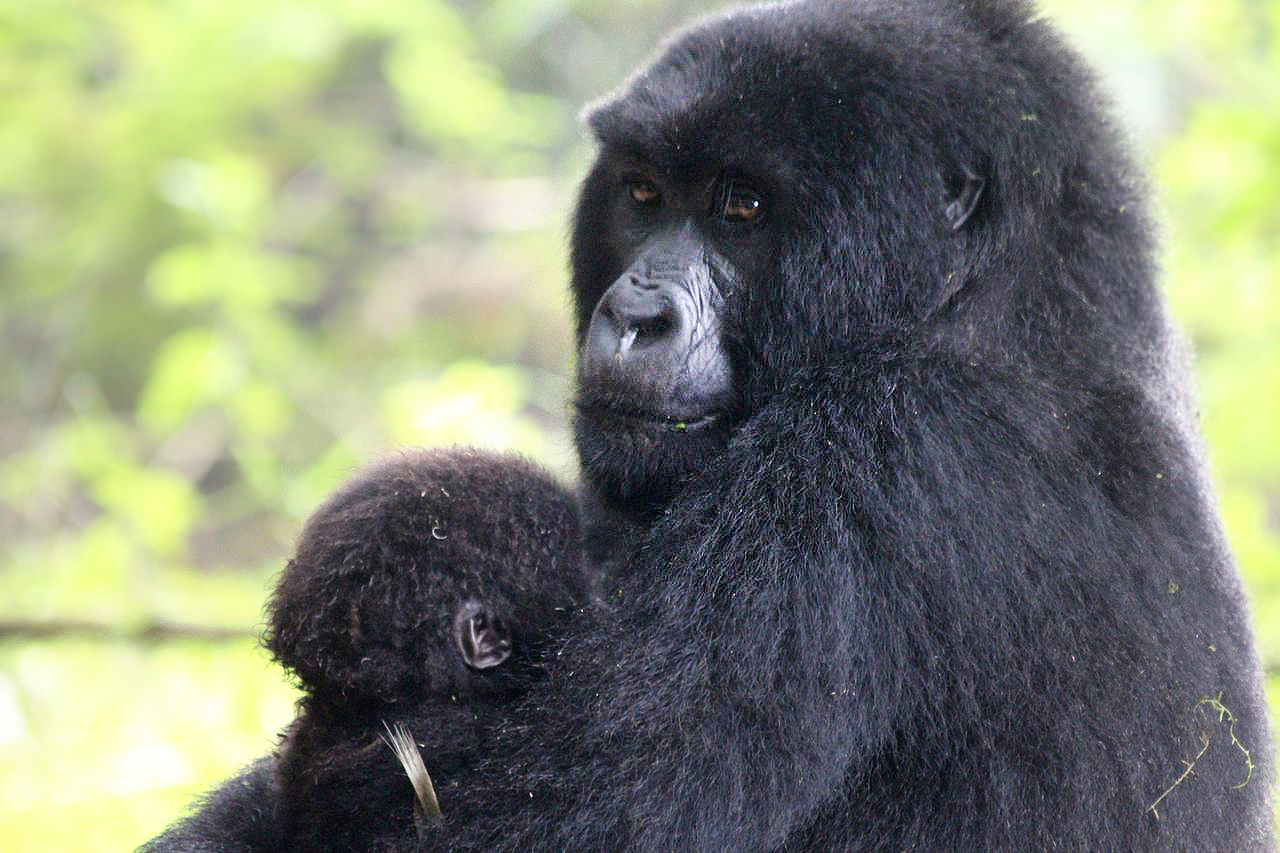 A mountain gorilla mother and her infant in Volcanoes National Park, Rwanda.
A mountain gorilla mother and her infant in Volcanoes National Park, Rwanda.
This has been, by far, the most incredible film shoot of my career. We are so thankful to the Gorilla Doctors, the Rwanda Development Board and the ICCN for allowing us access to the work being done to preserve the mountain gorilla. We look forward to telling their story. “
The Gorilla Doctors documentary will air on CBC’s The Nature of Things in Fall 2014. For more information about 52 Media, Inc. go to www.52media.ca.
Please consider supporting the Gorilla Doctors by making a secure online donation. Every dollar you give goes to directly supporting our gorilla health programs and One Health initiative. Thank you for your generosity!


 Donate
Donate